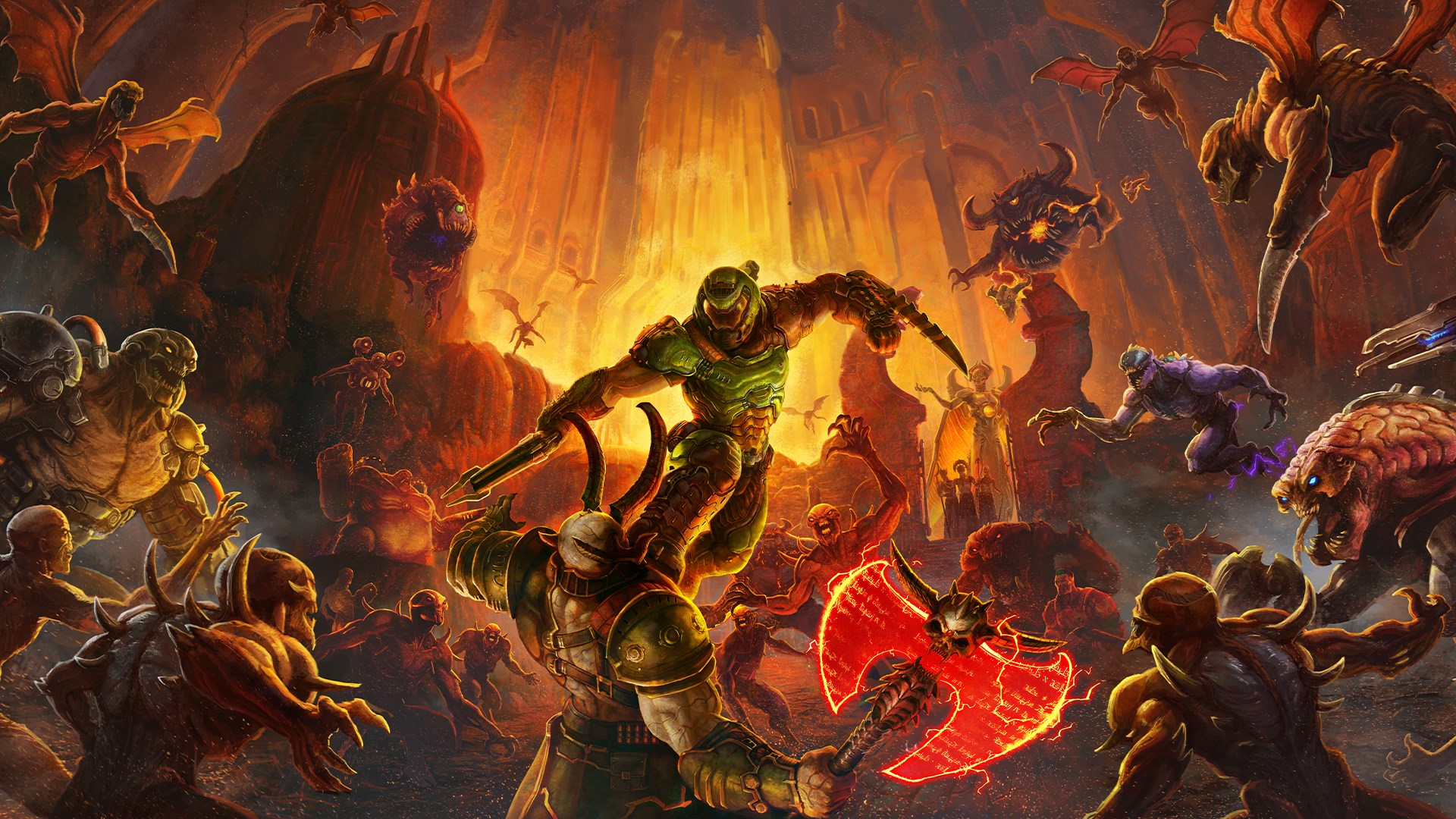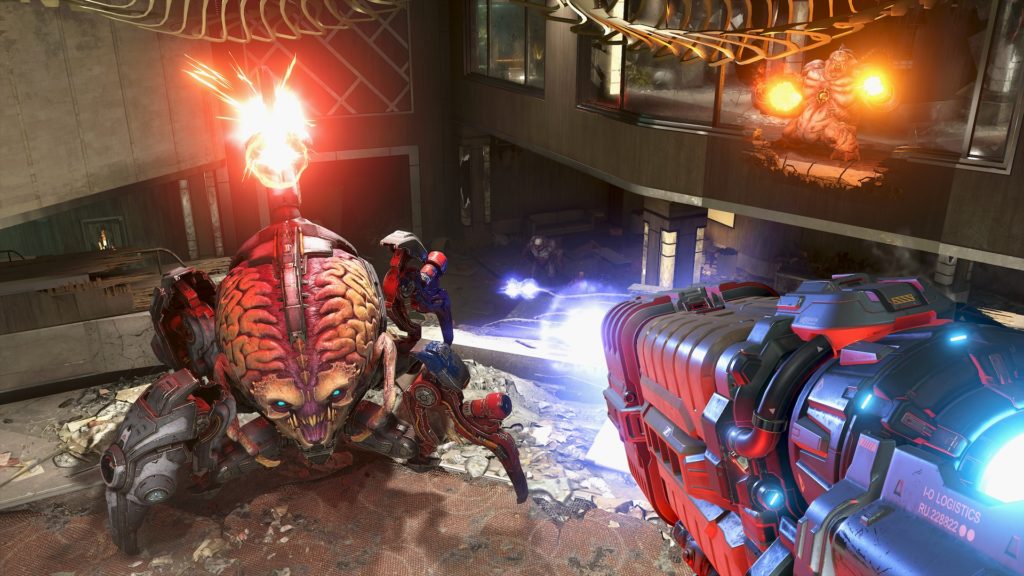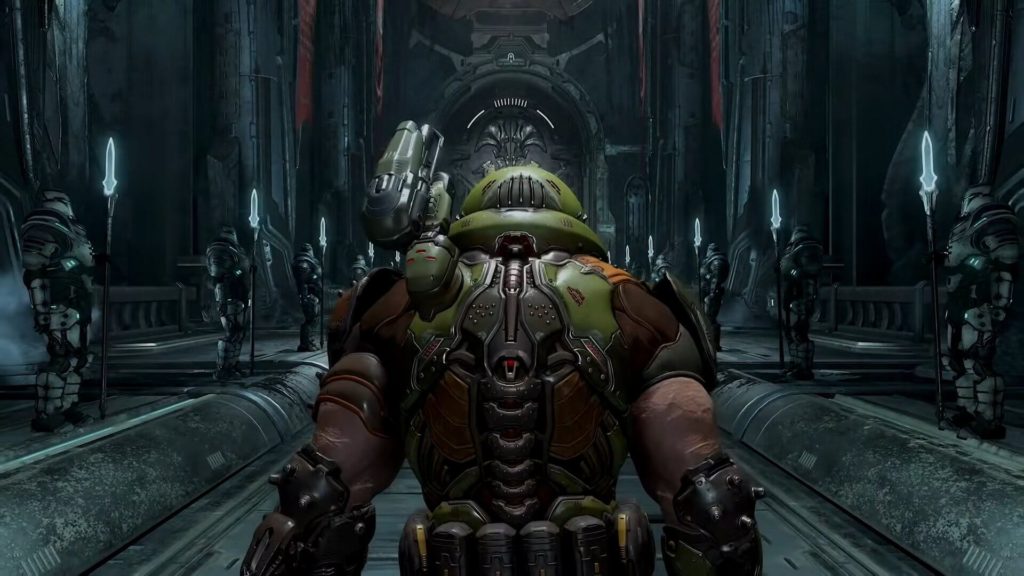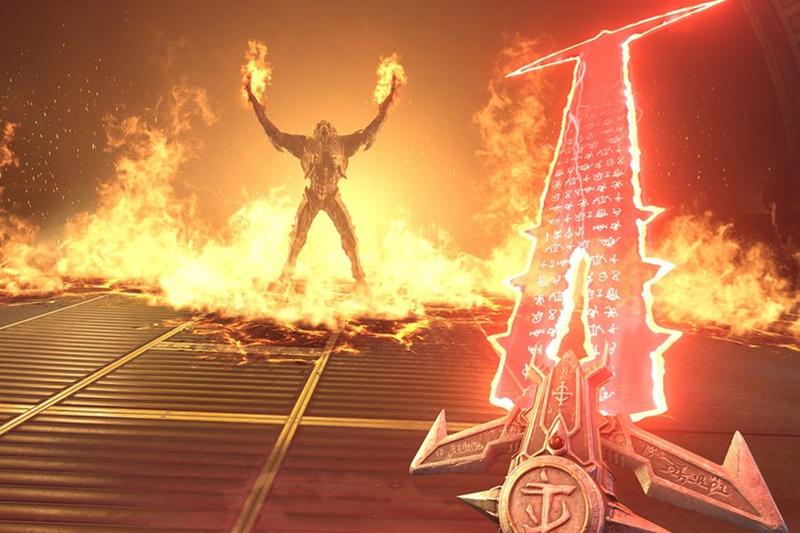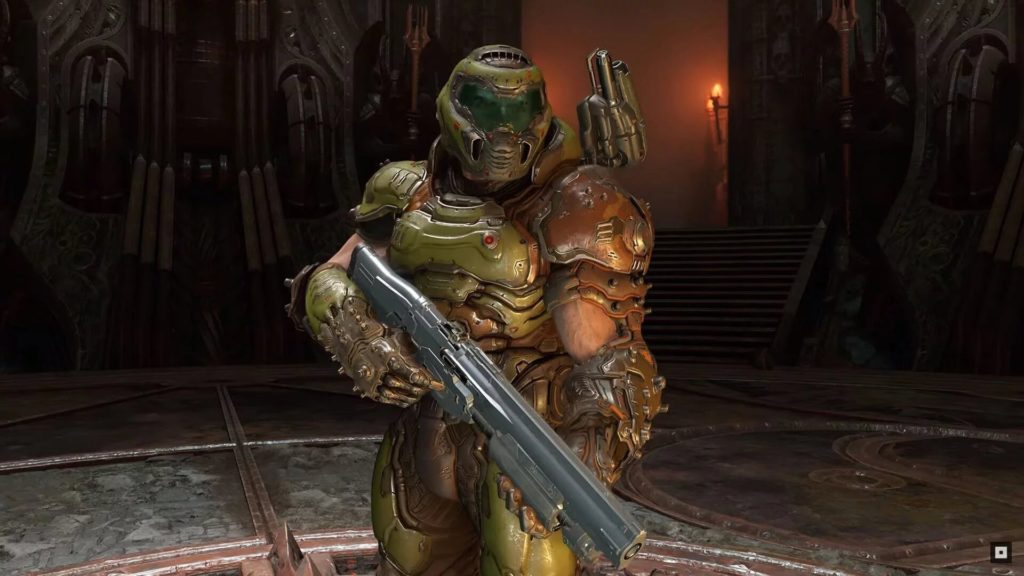Doom Eternal was one of the most anticipated games of 2020 and now that it is finally out, reviews for the game have started to pour in. Being the second installment in the latest reboot of the franchise, Doom Eternal carried a lot of expectations into its release and the good news is that not only does it manage to meet most of those expectations, it surpasses them by a good mile.
Doom Eternal goes where no Doom game has gone before. This is singlehandedly the craziest entry in the franchise that turns things up to eleven and never looks back. In Doom Eternal, the Doom Slayer returns back to Earth, or whatever is left of it, and this time around, you’re not the one who is stuck here with demons. Instead, they’re stuck with you as you go through hordes like a hot knife through butter and annihilate them into oblivion.
If Doom 2016 was a toddler learning to walk for the very first time, Doom Eternal is Usain Bolt sprinting towards the finish line and setting a world record. The sheer amount of violent destruction that you can cause with your exceptionally vast arsenal of weapons and slew of abilities is incredible. However, the real magic occurs when you pair those with the game’s extremely satisfying animations and sound design.
The game not only features a plethora of new weapons and abilities like the chainsaw and flamethrower, it also throws in some new demons like the Doom Hunter to counter your ever-growing inventory. The biggest change to the game as compared to Doom 2016 has been the overall pacing of the campaign though.
Why is there no multiplayer Deathmatch game mode in Doom Eternal?
In Doom Eternal, you don’t go through continuous rooms full of demons. Instead, the world is littered with platforming sequences, puzzles and secrets. Furthermore, Doom has now been ‘game-ified’ a lot too in Eternal with most of the enemies having very obvious weak spots allowing you to fully utilize your arsenal. The Fortress of Doom also makes a return to the Doom franchise which is a hub that you can visit between missions and upgrade your gear.
The best way to experience all of Doom Eternal’s chaotic madness is obviously at high framerates with visual settings cranked up to max. However, Doom Eternal is incredibly taxing on hardware and you’re going to need a pretty beefy setup to run it at optimal framerates and settings. The fact that Doom Eternal is a very demanding game becomes apparent when you see the amount of people complaining about low FPS, crashes and other performance issues all over the internet.
If you’re facing any of these issues, don’t worry since we have a expansive guide with multiple fixes that will help you with tweaking your game and hopefully get rid of all these performance issues. So, here’s how you can fix low FPS, crashes, stutters, freezes, lag and other performance issues in Doom Eternal.
1. Doom Eternal System Requirements:
While it is true that your game may have some glitches or compatibility issues that might be causing your issues, you also need to be sure that your system is powerful enough to run the game smoothly in the first place.
As we have stated before, Doom Eternal is an incredibly demanding title, more so than other games especially if you want to achieve higher framerates so having a beefy setup is absolutely necessary.
Usually, games have two sets of system requirements, minimum and recommended. However, Doom Eternal, being the crazy game that it is, adds in a third set that is specifically for those users who wish to go all out and play on the ludicrous Ultra-Nightmare difficulty. So, the system requirements for Doom Eternal are as follows:
Minimum system requirements:
- CPU: Intel Core i5 @ 3.3 GHz or AMD Ryzen 3 @ 3.1 GHz
- RAM: 8 GB
- HDD: 50 GB
- GPU: Nvidia GeForce GTX 1050 Ti, Nvidia GeForce GTX 1650 or AMD Radeon R9 280, AMD Radeon RX 470
- OS: Windows 10 (64 bit)
- DirectX: 11
- Screen Resolution: 1080p
- Network: Broadband Internet connection
Recommended system requirements:
- CPU: Intel Core i7-6700K or AMD Ryzen 7 1800X
- RAM: 8 GB
- HDD: 50 GB
- GPU: Nvidia GeForce RTX 2060, GTX 1080 or AMD Radeon RX Vega 56
- OS: Windows 10 (64 bit)
- DirectX: 11
- Screen Resolution: 1080p
- Network: Broadband Internet connection
Ultra-Nightmare system requirements:
- CPU: Intel Core i9-9900K or AMD Ryzen 7 3700X
- RAM: 16 GB
- HDD: 50 GB
- GPU: Nvidia GeForce RTX 2080 Ti or AMD Radeon VII
- OS: Windows 10 (64 bit)
- DirectX: 11
- Screen Resolution: 1080p
- Network: Broadband Internet connection
As evident from the specs, you’re going to need at least a GTX 1050Ti to run the game smoothly on low settings and if you wish to turn your graphics settings up, you’re going to need something much more powerful. However, if your PC is already good enough for the game and you’re still experiencing FPS drops, something else might be the issue so let’s move on.
2. Install the latest graphics card drivers:
Doom Eternal just came out a couple of days ago and with it also came new graphics card drivers for better optimization from both AMD and NVIDIA. If you’re one of those people who have disabled auto-updates due to the irregularities they can cause sometimes, you might want to check for a new graphics card update that should be sitting around for you to install.
These drivers usually iron out most of the day one performance glitches with the game. However, you probably want to keep your drivers updated in the future as well to get the later fixes as well. Here are the links to the latest graphics card drivers for both NVIDIA and AMD cards:
3. Disable the integrated GPU:
By this point, it should be clear that Doom Eternal absolutely needs a pretty hefty graphics card to run properly and there is no way you can achieve good performance levels using an integrated GPU. However, sometimes your PC can still decide to run a game using just the integrated GPU for some reason.
Obviously, this can result in appallingly low framerates and can cause some other severe issues in-game as well. So, to make sure that Doom Eternal is running on your graphics card, you need to force the game to use it. Note that this fix is only for users with NVIDIA GeForce graphics cards. Here’s how to do it:
- Right click on an empty desktop to bring up the menu.
- Open NVIDIA Control Panel and select the “Manage 3D Settings” option.
- Search for the game you’re trying to enforce the graphics card usage on. In this case, that would be Doom Eternal.
- In case you cannot find Doom Eternal in the application list, browse for the executable (.exe) file for the game by going into the directory where it is installed and add it to the list.
4. Bethesda Launcher tweaks:
Before going into the nitty gritty details of tweaking graphics settings and such, there are a couple of things you can do that will hopefully fix many issues like low FPS and crashes. While Doom Eternal is out on Steam and that is going to be the platform of choice for most people, a surprising amount of people still use the Bethesda Launcher instead because of its better integration with the game.
Everything included in the AMD Adrenalin 2020 mega update
If you’re one of those users, there are two tweaks in the Bethesda launcher that can potentially fix your low FPS, lag, crashes or other performance issues. The first one is running the launcher as an administrator.
Sometimes, permission issues for launchers can cause performance drops in games and we’ve found that running the launchers as an administrator can fix those issues. So, just follow these steps:
- Go to the Bethesda Launcher folder.
- Right click the Bethesda launcher executable file and select properties.
- Move to the compatibility tab and choose the ‘Change Settings for all users’ option.
- You’ll see the privilege level option there. Select ‘Run this program as administrator’ under it and then click apply.
The second thing that you can do with the Bethesda launcher is recheck your game files and repair them if needed. Sometimes, due to connection disruptions, your game files can get corrupted while downloading so the Bethesda launcher has a handy tool that goes through every file for your game and makes sure that it is not broken or corrupted.
Use your Gaming PC to fight against COVID-19
Here’s how you can repair Doom Eternal on the Bethesda Launcher and hopefully fix your freezing, low FPS, crashing or other performance issues with the game:
- Run the Bethesda Launcher.
- Under the games list on the left, select Doom Eternal.
- Click on Game Options and choose the ‘Scan and Repair’ option.
The Bethesda Launcher repair wizard will launch and run for a while as it goes through your game files and checks for irregularities. After the check is complete, your game should be fully repaired.
5. Verify Doom Eternal game files on Steam
Much like the repair feature on Bethesda Launcher, Steam also offers its own tool that verifies the integrity of game files. So, if you’ve bought Doom Eternal on Steam rather than the Bethesda launcher, you can run a scan to check your game files and make sure that they’re all intact and not corrupted. Just follow these steps:
- Navigate through your Steam library and right click on Doom Eternal.
- Go into Properties and click on the Local Files tab.
- Select the Verify Integrity of Game Files option.
Steam will then start going through your game files one by one to make sure that they have all been downloaded correctly. If any of the files is found to be missing or corrupted, Steam will re-download it. Once this process is done, your game should be good to go.
6. Change graphics card control panel settings:
Before we dive into the in-game graphics settings, you should probably check the settings for your graphics card. Tweaking these settings can make a world of difference sometimes and that has proven to be the case for a lot of people in the past as well. Both NVIDIA and AMD ship their cards with their own versions of control panels so we’ll be going through those settings one by one.
NVIDIA Control Panel settings:
If you’re using an NVIDIA GeForce graphics card, follow these steps:
- Right click on an empty desktop and open the NVIDIA Control panel.
- Select the ‘Manage 3D settings’ tab on the left
- Now, you can either choose Global Settings or go into Program Settings and select Doom Eternal; the choice is yours.
- Under the settings tab, change the Power Management mode to Highest Performance.
- Alter the Multi-Display option to Single Display Performance mode.
- Enable Threaded Optimization.
- Turn off Image Sharpening and Low Latency mode.
- Change the Max Pre-Rendered frames to 1.
- Select Performance Mode under Texture Filtering Quality.
- Enable G-Sync if your monitor is compatible with it.
AMD Control Panel settings:
If you’re using an AMD Radeon graphics card, follow these steps:
- Open the AMD Control Panel and select Global Graphics.
- Once you’re in, disable/turn off the following features:
- Radeon Anti-Lag
- Radeon Boost
- Image Sharpening
- Morphological Filtering
- Anisotropic Filtering
- Wait for V-Sync
- Maximum Tessellation Level
- Radeon Chill
- Frame Rate Target Control
- OpenGL Triple Buffering
- After that, set the Anti-Aliasing Mode to ‘Use Application settings’ and method to Multi-Sampling.
- Set the Texture Filtering Quality to Performance mode and enable Surface Format Optimization.
- Change the GPU Workload to Graphics mode.
- Select AMD optimized mode for both Tessellation Mode and Shader Cache.
7. Change in-game video settings for Doom Eternal:
If your performance issues still persist after trying out the methods stated above, this might potentially do the trick for you. Usually, video games detect your hardware and adjust settings automatically. However, these per-determined settings can be hit or miss a lot of times since everyone’s setup is vastly different with interchanging components.
Doom Eternal thankfully has a lot of video settings that can be tweaked to achieve a much more stable frame rate. So, we’ve selected a few settings that will most definitely improve your FPS while also not sacrificing the visuals too much. These settings provide the best of both worlds in terms of graphics and FPS and are tailored towards a mid-range PC, so nothing too fancy.
Under Settings > Display
- Set the Window Mode to Full screen.
- While it is recommended to run the game at 1920 x 1080, you can turn it down to 720p if your PC is on the lower-end of the spectrum and you’re struggling to even hit 30 FPS.
- Turn off HDR and V-Sync.
Under Settings > Video
- Change the Field of View to anything above 90 for an optimal experience.
- Set Motion Blur to Low.
- Turn off Performance Metrics.
Under Settings > Advanced
- Change the following settings to Medium:
- Texture Pool Size
- Reflection Quality
- Light Quality
- Decal Quality
- Water Quality
- Volumetric Quality
- Geometric Quality
- Alter the following settings to Low:
- Shadow Quality
- Motion Blur Quality
- Directional Occlusion
- Particle Quality
- Set the Texture Filtering Quality to High.
- Turn off Chromatic Aberration.
- Set the value of Sharpening to 10 and Film Grain to 0.
- Turn off Resolution Scaling Mode and set the Resolution Scale to 100 with the Resolution Scaling Target FPS being 60.
- Turn on Depth of Field.
- Turn off Anti-Aliasing. To do this, press the ~ key on your keyboard and type r_antialiasing 0 in your console. Press enter to apply the setting.
These settings are obviously not absolute and can change depending on your setup. However, these do provide a good basis for performance focused settings and you can fine tune these according to your own preference. If your game is easily going over 70 FPS, you can turn some settings up and vice versa, you know the deal.
8. Turn off secondary display
Dual monitor setups have been known to cause performance issues in some games resulting in massive FPS drops and sometimes, even stutters and crashes. A lot of people have reported that just switching over to a single display has improved the performance of their game dramatically and this might fix the issue for you as well.
So, just unplug your secondary monitor from your PC by pulling out the HDMI or Display Port cable (whatever you’re using). After that, restart your PC and you should be good to go.
9. Task Manager Settings:
If none of these methods have worked for you, you can try to reduce the resources that are allocated to other tasks so your game can run more smoothly. This can be done by simply changing the game to a high priority task in the task manager. In order to do this, just follow these steps:
- Run Doom Eternal.
- Alt+Tab out to the desktop and right click the taskbar.
- Open the Task Manager and look for Doom Eternal in the Details tab.
- Right click the Doom Eternal process and under Set Priority, choose High.
If your problem still persists even after going through all of these solutions, you might want to contact the developer or the graphics card manufacturer for further troubleshooting. Another good bet is rolling back the windows update to the previous version as that has also been known to cause a lot of issues on PC.
Doom Eternal is out now on PC, PS4 and Xbox One.


